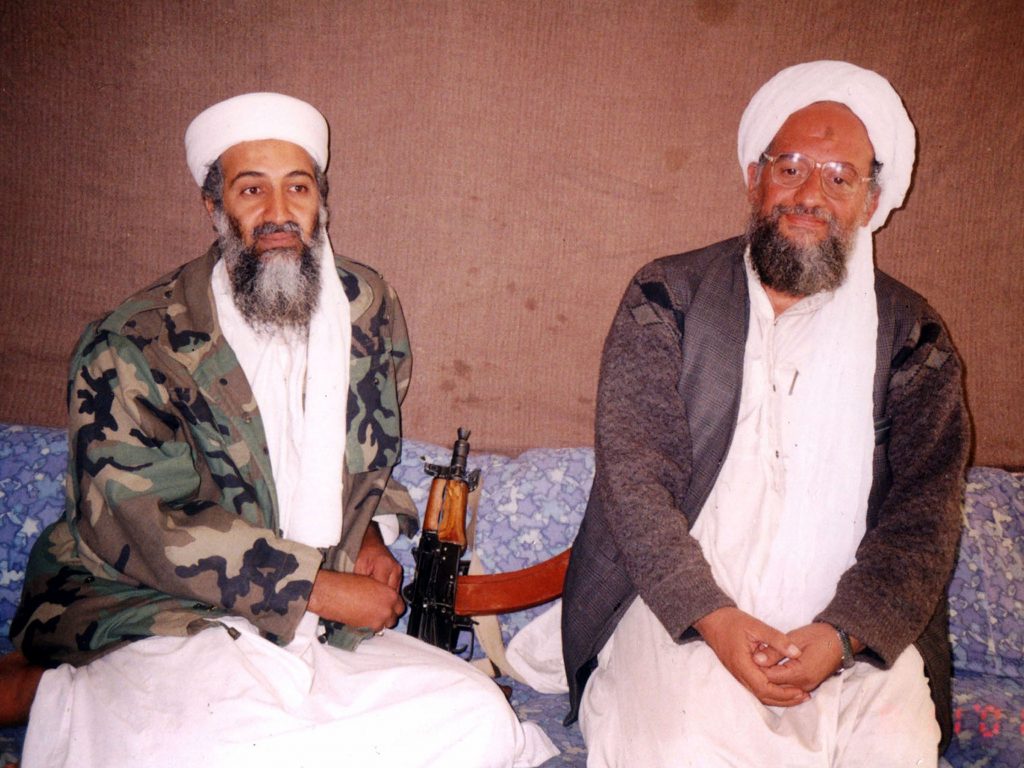- The US killed Al Qaeda leader Ayman al-Zawahiri in a precision airstrike this month.
- The circumstances of the strike suggest the US used the R9X variant of its Hellfire missile.
- The R9X is basically a missile packed with swords, and the US is very secretive about its use.
The US killed Ayman al-Zawahiri, the leader of Al Qaeda and a deputy of the late Osama bin Laden, in a precision airstrike earlier this month.
One of the most wanted terrorists in the world, al-Zawahiri was killed as he stood on a balcony of a house in Kabul. The early morning strike was conducted by a drone that fired two AGM-114 Hellfire missiles.
Unlike past drone strikes in Afghanistan, including one in the final days of the US withdrawal last year, this strike is believed to have only killed its intended target and caused little collateral damage — suggesting that the CIA-led attack made use of one of the most secretive weapons in the US arsenal.
The AGM-114 R9X Hellfire missile

Developed in an attempt to reduce collateral damage and civilian casualties, the R9X Hellfire missile is probably one of the most, if not the most, precise munitions of its kind in the world.
While other versions of the Hellfire take out targets in the expected ways — through explosive force or with shrapnel — the R9X crushes or slices a target to death. It is essentially a flying bundle of swords that can kill the occupant of a car without harming people around the vehicle.
The missile itself is about 6 feet long and 100 pounds with six 18-inch blades that pop out of its midsection seconds before impact. Propelled by the missile, they can slice through most anything in their path and have a reported kill radius of 3 feet.
Precision drone strikes are nothing new in the US-led war on terror. Since 2001, US leaders have turned to unmanned aerial systems to monitor, track, and take out terrorists all over the world.

The heavy reliance on drone strikes in Pakistan, Afghanistan, Somalia, Yemen, Syria, Iraq, and elsewhere led to increased civilian casualties. That, along with terrorists' attempts to surround themselves with civilians to avoid US airstrikes, prompted development of the R9X during the Obama administration, according to US officials who revealed the munition's existence to The Wall Street Journal in 2019.
The US military has used the AGM-114 Hellfire for decades. Several variants tailored to different operational circumstances have been developed and become some of the most frequently used precision-guided munitions. In 2015 alone, units assigned to US Special Operations Command fired more than 1,000 Hellfire missiles of all variants, primarily against ISIS targets in Iraq and Syria.
The R9X variant is reserved for the most important and hardest-to-reach targets and doesn't appear to be used often.
Some prominent cases of its employment include a 2019 strike in Yemen against Jamal al-Badawi, an Al Qaeda terrorist behind the USS Cole bombing in 2000; a 2017 strike in Syria against Ahmad Hasan Abu Khayr al-Masri, deputy leader of Al Qaeda; and a 2020 strike in Syria against Sayyaf al-Tunsi, a senior Al Qaeda member.
R9X Hellfire for special operators

The strike on al-Zawahiri was carried out by the CIA, but the US intelligence community isn't the only one using the R9X.
US Special Operations Command is "the prime purchaser" of the missile, the Pentagon says. SOCOM and the secretive unit within it, Joint Special Operations Command, have used the missile several times in the past to take out high-value targets across the Middle East.
The US special-operations community as a whole invested heavily in aerial drones after seeing early in the war on terror that they offer immense utility and flexibility to commanders. Today, all special-operations units use drones of all sizes.
The strike on al-Zawahiri was reportedly conducted with an MQ-9 Reaper, a newer, heavier version of the MQ-1 Predator. Another Predator variant, the MQ-1C Gray Eagle, remains in use with the "Night Stalkers" of the US Army's 160th Special Operations Aviation Regiment.
